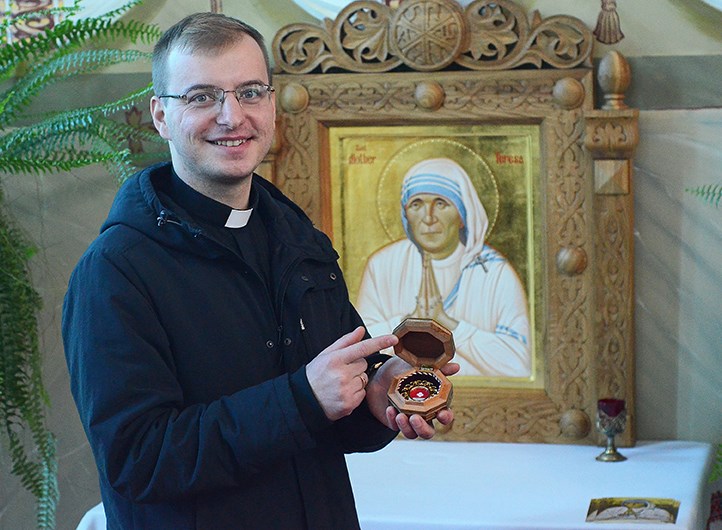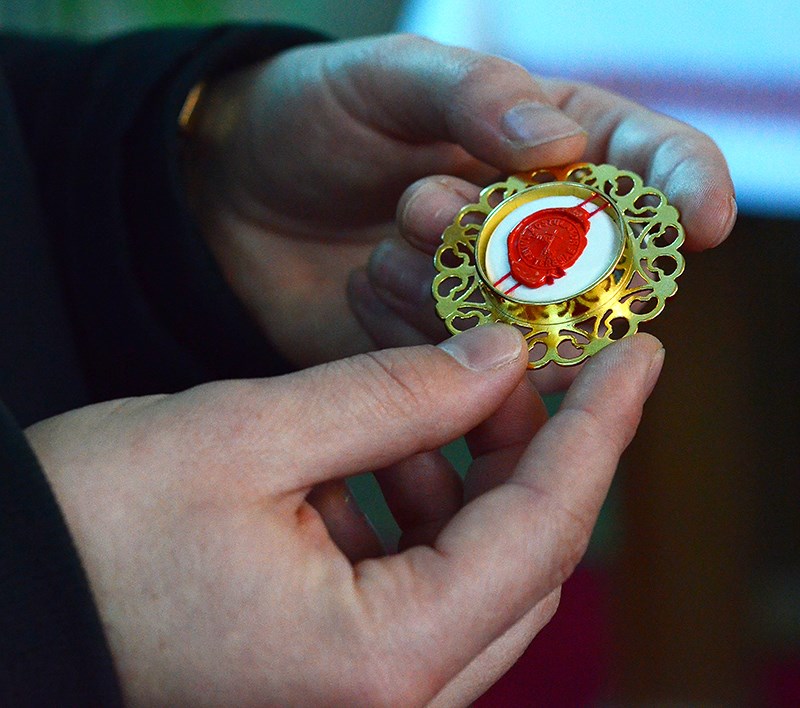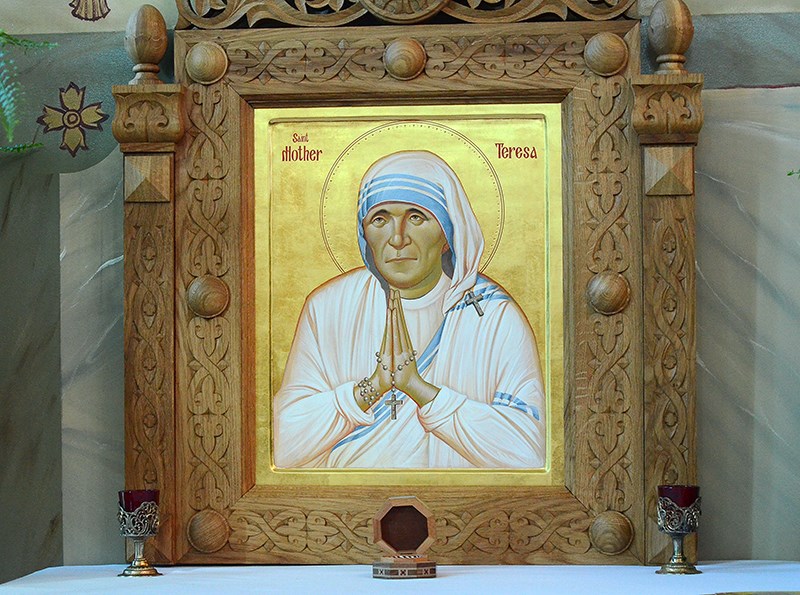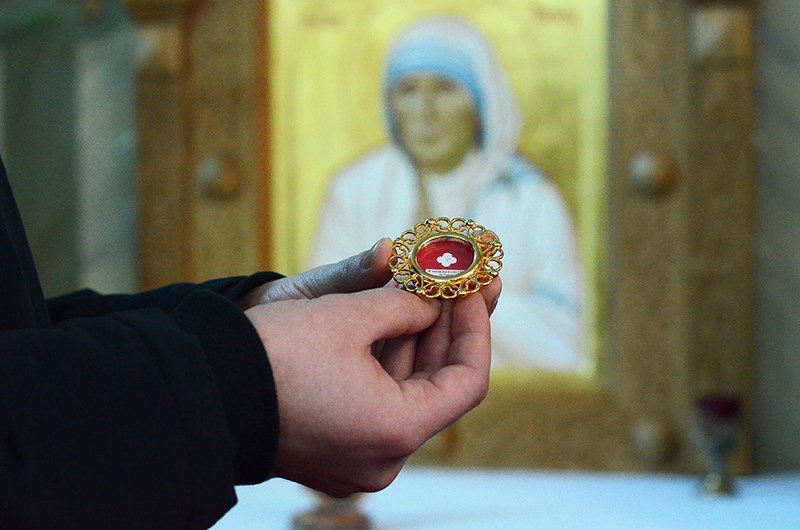A New Westminster church is the place to be this holiday season for people looking for a reminder of “love and compassion in the midst of suffering and pain.”
Holy Eucharist Cathedral has acquired two pieces of St. Mother Teresa of Calcutta’s hair and will host a service Thursday (Dec. 6) for people to view and venerate it.
The hair was donated to the church earlier this year by Canadian priest Father Brian Kolodiejchuk, Mother Teresa’s former bodyguard and driver and the main promoter (postulator) of her case for sainthood, which was bestowed in 2016.
Kolodiejchuk made the donation after a series of talks about Mother Teresa – a nun who dedicated her life to helping the poor of Calcutta – at Ukrainian Catholic churches in Victoria, Â鶹´«Ă˝Ół»and Kelowna in January, Holy Eucharist parish priest Father Mykhailo Ozorovych to the Record.

A permanent home for the hair has been established in New West because Holy Eucharist is the seat or “home base” of the bishop in charge of Ukrainian Catholic parishes in B.C. and Yukon, Ozorovych said.
As Mother Teresa’s postulator, Kolodiejchuk is the custodian of her relics and in charge of distributing them, Ozorovych explained.
“When the process of canonization happens, at some point the body is actually exhumed,” he said. “At some point when (Mother Teresa’s) body was exhumed and moved and put in a special place for veneration, I presume that at that point they just took some of her hair to be venerated throughout the world.”
Authentic relics are sealed in a case that is stamped with the postulator’s seal and accompanied by a certificate of authenticity.

To create a proper home for the hair, Holy Eucharist commissioned the production of a traditional icon of Mother Teresa and the carving of an oak frame and side altar.
Both were the work of artists in Ukraine, Ozorovych said.
“This icon is very special for the fact that it’s a Byzantine-type of icon,” he said of the image of the praying saint set against a gold-leaf background. “It’s not like you would see in any western church. It’s typical to Byzantine-era Christendom.”
The side altar will be the centre of a special service today (Dec. 6) at 7 p.m. during which people will gather to pray and to touch the relic and be blessed by it, Ozorovych said.
Veneration is a tradition that dates back to the beginnings of Christianity, he said, when churches were first built on the tombs of martyred believers.
A relic, which can be a body part (first-class relic), an item once used or worn by a saint (second-class relic) or even an item that has touched other relics (third-class relic), is a physical reminder of the saintly individual and their service to God and other people, according to Ozorovych.
But veneration isn’t just symbolism, he said.

“There is power in the relic itself, we believe, because that relic, that piece of body, whatever it may be, is a saint, so there is power in that, so it’s not just a nice gesture, but we actually believe in the power of the presence in those relics,” he said. “That’s why we so highly venerate them.”
Ozorovych acknowledged that perspective is not universal.
“Other people can be disgusted by it,” he said. “There are cultures where dead people and death are something to be afraid of or something definitely not to venerate, especially a piece of somebody’s dead body. … For us, death is beautiful. If you die with Christ, you will rise with Him. For us, that’s part of life and passage into eternal blessedness.”
Anyone who feels like the veneration of Mother Teresa’s hair might give him or her “some good spiritual fruits,” however, is welcome to the service Thursday.
The first such service on Nov. 3, drew about 100 people, and Ozorovych estimated less than 10 per cent were Holy Eucharist members.
“Most of those people were immigrants, especially from the Philippines, so that speaks to another reality of how our churches are composed here,” he said. “In the Â鶹´«Ă˝Ół»area, a lot of them are immigrant families from more religious countries than Canada is right now. A lot of youth were there, too, because Mother Teresa is such a cool saint.”
After the service this week, Holy Eucharist will hold services centered around the relic on the first Thursday of every month.
The relic can also be viewed anytime the church is open.
Holy Eucharist Cathedral is at 501 Fourth Ave.



